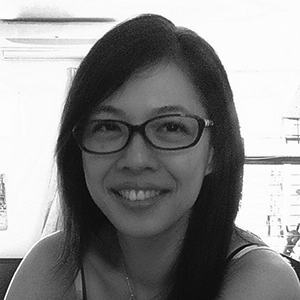I’ve been keeping company with clowns of late, and I’m not referring to the politically-inclined types.
 For the past few months, I’ve been volunteering as assistant and observer to three hospital clowns behind Red Bubbles, a non-profit organisation that uses the gentle art of care clowning to bring laughter and smiles to our often-grim hospital wards and hallways.
For the past few months, I’ve been volunteering as assistant and observer to three hospital clowns behind Red Bubbles, a non-profit organisation that uses the gentle art of care clowning to bring laughter and smiles to our often-grim hospital wards and hallways.
In the short time that I’ve had the pleasure to observe the trio behind Red Bubbles, I’ve picked up so much more than how to make people laugh.
Here are the three life lessons I’ve learnt, courtesy of three very funny clowns.
Take your job seriously, even if it’s not a serious one
I was prepared to jump into the role of an apprentice clown right from the start, thinking that the one-week clowning course that I took more than 10 years ago and my limited ballooning skills would more than prepare me for the role ahead.
Little did I know how ill-equipped I was to be funny. Care clowning isn’t so much about the gimmicks, the tricks and the ballooning skills as it is about discerning the mood levels of the young patients.
“Our work is about knowing when to ditch the routine, and try on another if a young patient isn’t in the mood for what we had planned earlier,” said Dr Lat, by day a part-time lecturer at a local university, as he strummed his tiny ukulele.
To be so adept at reading the patients and knowing just which routine to switch to takes a lot of experience and behind-the-scenes work.
Every week, the Red Bubbles team put in hours of practice sessions to execute what others must see as the seemingly effortless task of being funny.
In other words, they take their jobs seriously, even if others don’t.
It’s OK to sometimes to take that nose off
On my first visit with the Red Bubbles team, I was surprised to see that they didn’t perpetually don their red, round noses, a mark of clown’s pride and identity.
After our first two-hour session, they explained that while the bright crimson noses may be appealing to most children, sometimes a very young child or a patient weak from the side-effects of chemotherapy may be frightened by it.
In those situations, the clowns often trade their noses – and larger-than-life personas – for just a big smile and a warm hand to hold.
“We’re clowns, and we’re supposed to be loud and slapstick, but in here, it’s OK to sometimes just take that nose off and be a friend,” said Dr Bubble, the anchorman behind the organisation.
Life isn’t black and white, with straight grid lines to carve out what we can or should do.
Adaptability and the wisdom to know when to stop going by the book, are some of the best traits we can ever pick up in life’s journey.
When you think you’re giving, you’re actually receiving
People give to charity for a variety of reasons, and not all are always commendable.
Speak to any humanitarian organisation and you will be shocked at the unusable things that is often found in public donation boxes.
Giving, whether in the form of money, material goods or time, is also an item on a checklist of politically-correct and socially admired things to do.
But in reality, when you give with the purest intentions to ease another’s troubles, “you gain in ways you can never imagine”, Dr Donna, a veteran in the performing arts industry, told me before one clowning session.
“What we do here is my therapy,” she said, as she slipped on her oversized Minion bedroom slippers.
“It reminds me that the world is not about me. That’s a lesson in reality you can’t get with all the money in the world.”
On my first visit to the paediatric cancer ward at HUKM, I met 14-month-old Kalai who has been on chemotherapy since before she could even walk.
She clung tightly to her mother, who had the tired, sad eyes that only a parent can have when they are helpless in the face of a child’s illness.
It may sound cliché, but something stirred in me when after almost an hour, I managed to coax a shy smile from the young girl who has likely known more pain than joy in her lifetime.
Her strength, and that of the many other children I have met in the hallways of this hospital, was a bittersweet reminder of the frailties of humanity, but also of the seemingly inhuman strength that can be born out of the most difficult situations.
It has also shown me that at the core of it, our people have so much more in common than our hateful politics have tried to paint.
The dedication of the nursing staff and the bond between the caregivers transcend social or racial barriers.
In these hospital wards, joy and suffering knows no religion or race. It didn’t matter if you were Malay, Chinese or Iban, Sikh, atheist or Christian, everyone was in the same boat, and everyone wanted that boat to stay afloat.
And I felt an almost-dying hope for Malaysia reignited.
Hospital clowning, for me, has been the perfect balm to a cynical, pessimistic soul. And instead of being the giver, I am instead the blessed. – December 20, 2015.
* This is the personal opinion of the writer or publication and does not necessarily represent the views of The Malaysian Insider.


Comments
Please refrain from nicknames or comments of a racist, sexist, personal, vulgar or derogatory nature, or you may risk being blocked from commenting in our website. We encourage commenters to use their real names as their username. As comments are moderated, they may not appear immediately or even on the same day you posted them. We also reserve the right to delete off-topic comments